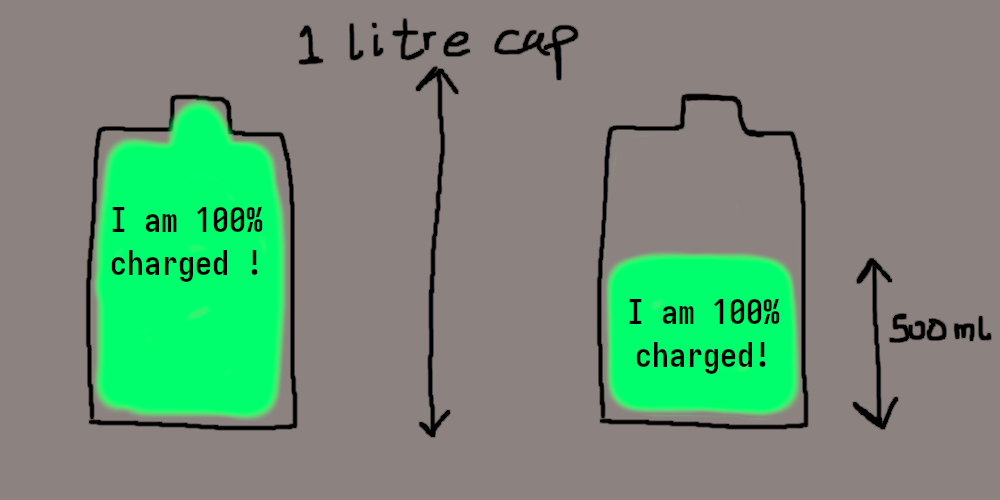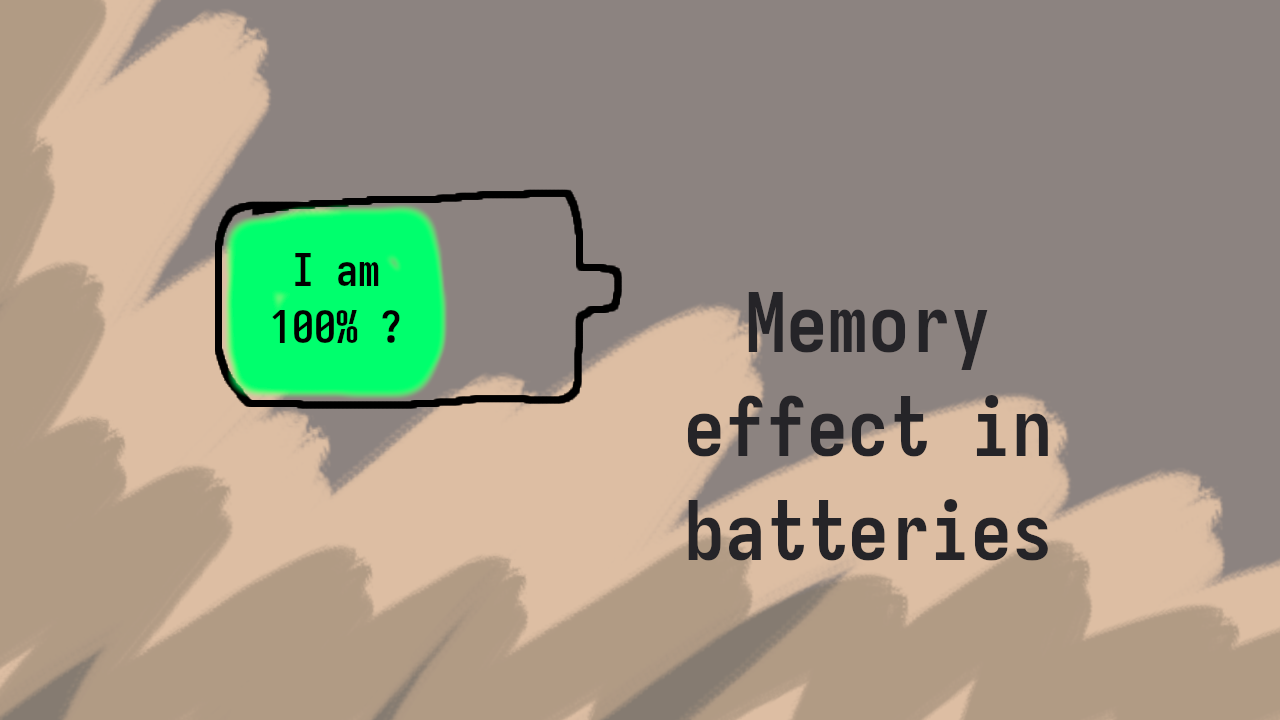Memory effect is also known as battery effect, lazy battery effect, or battery memory. It an issue observed mostly in nickel-cadmium batteries (Ni-Cd) and to some extent Nickel-Metal Hydride (NiMH) batteries.
It is condition where a battery forgets its maximum capacity and instead remembers a smaller one. Thus it shows full even though its not.
Why it happens?
This usually happens if we charge the batteries very frequently, like plugging it every time it drops to 50 or 40 percent. This is also called partial charging.
In reality it is not so simple to understand as to what really happens, but we can get an idea of what it is with a simple analogy. You can always dive deeper on your own if you got the curiosity 😉 !
Simple analogy
Let us understand it with a liters analogy.
Suppose a battery has a capacity of 1 liter. When you fill all 1 liter it gets fully charged and shows 100%. But over time due to partial charging the battery forgets this capacity and thinks 500ml is its full capacity. So next time when you fill it up to 500ml only, the battery will think it has reached its full capacity. It won’t accept any more water (charge). It will thus show 100% even though it actually isn’t.

Please note this is a very simplified analogy just to get the gist of the concept. You are free to comment and point out any mistakes I made 🙂 .
The most common fix
It is often fixable by completely draining the battery to 0% and recharging it back to 100%. It is known as re calibrating the battery.
What about modern batteries?
Today, most devices use Lithium-ion (Li-Ion) or Lithium Polymer (Li-Po) batteries. These don’t suffer from memory effect, and partial charging is fine for them.
However, since they’re still made of chemical compounds, they will naturally wear down over time, and their maximum capacity will reduce. This isn’t the memory effect — it’s just normal aging.

Leave a Reply